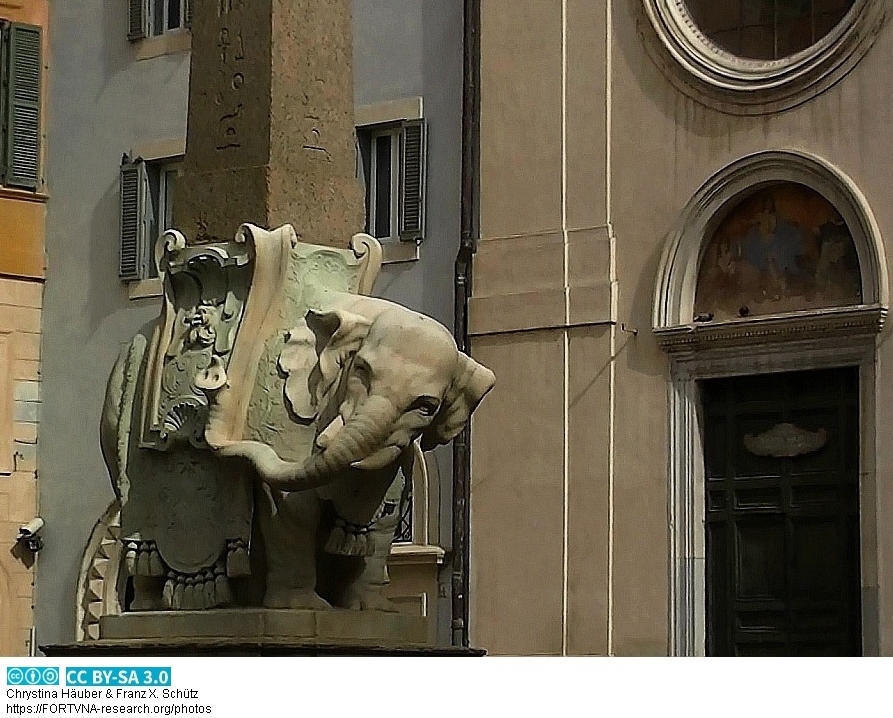
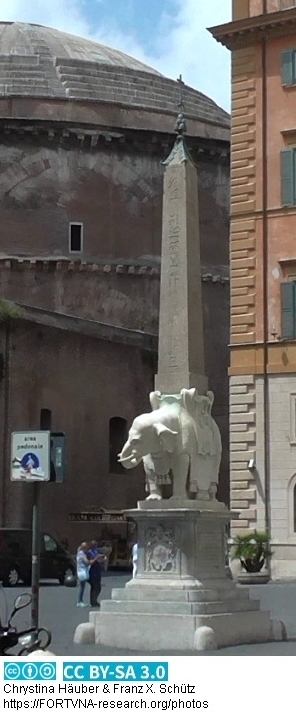
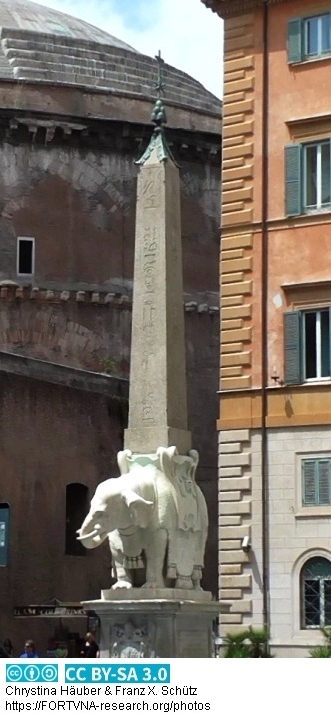
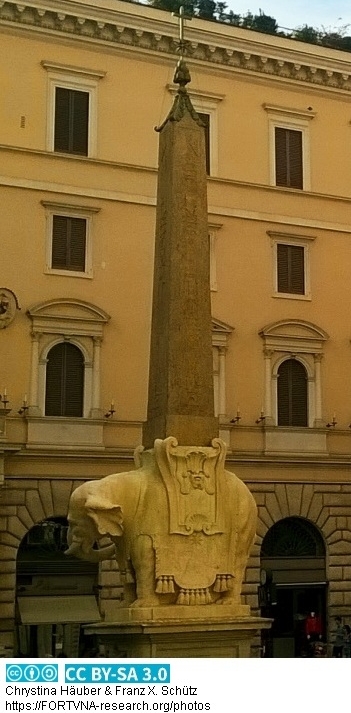
Zitat aus FORTVNA PAPERS 2, Chrystina HÄUBER, S. 154:
"The Obeliscus Minerveus
The Obeliscus Minerveus, for which Giovanni Lorenzo (Gianlorenzo, G.L.) Bernini created the famous socle in the shape of an elephant, was found in "1665 im Garten des Dominikanerkonvents", that is to say, likewise within the area of the Iseum Campense; cf. K. Lemke (1994, 206-207, cat. no. D "52. Obelisk Minerveus (Taf. 14,1-4) ... Material: Rosengranit; Maße: H[öhe] 5,47 m; untere B[reite] 0,72 m; Datierung: Spätzeit, Aprie (589-570 v. Chr. Aus Sais ...)". For both obelisks (i.e., the Mahutaeus and the Minerveus), cf. J.-C. Grenier: "Obelischi: Iseum Campense", in: LTUR III (1996) 358-359, Fig. 219. The author discusses also the other obelisks that have been found within the area of the Iseum Campense.
Cf. DIE ZEIT Das Lexikon in 20 Bänden, Band 02, Bas-Chaq (2005), p. 132 s.v. Bernini, Giovanni Lorenzo (Gianlorenzo), italien.[ischer] Baumeister, Bildhauer und Maler, * Neapel 7.12.1598, † Rom 28. 11. 1680. B.[ernini] hat Skulptur und Architektur des 17. und 18. Jh. in Italien, Spanien und den Ländern nördl.[ich] der Alpen nachhaltig beeinflußt und das barocke Rom (u.a. [unter anderem] ab 1629 leitender Architekt an St. Peter) maßgebend gestaltet ... Hauptwerke (in Rom) ... Vier-Ströme-Brunnen auf der Piazza Navona (1648 ff.) ... [cf. here Fig. 5.5.2]" (my emphasis).
Cf. here Figs. 5.2; 3.7; 3.7.1; 3.7.1.1, labels: Piazza della Minerva; Bernini Elephant/ Obeliscus Minerveus; S. Maria sopra Minerva; Former Convent of the Dominicans; ISEUM [CAMPENSE]. On Falda's Rome map (cf. here Fig. 5.6), the Obeliscus Minerveus is visible."
Zum download FORTVNA PAPERS 2 und zu den hochauflösenden Karten, vgl. Ausschnitten unten.
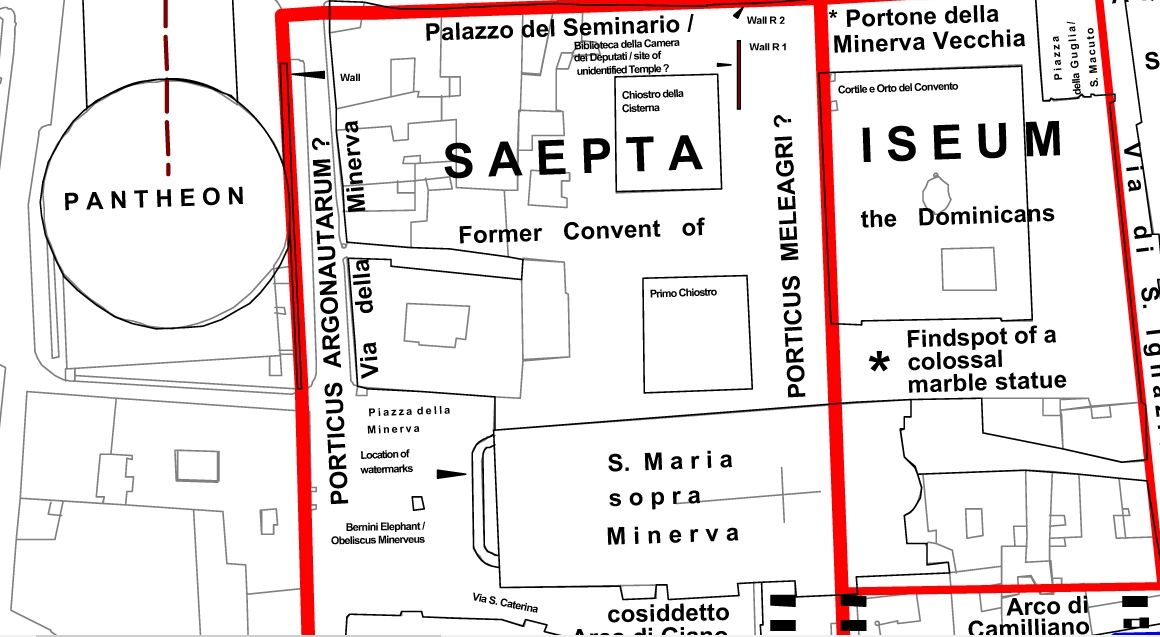
last update: 24.3.2023
Datenschutzerklärung | Impressum